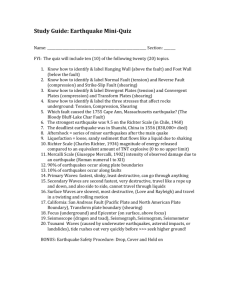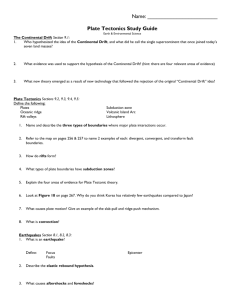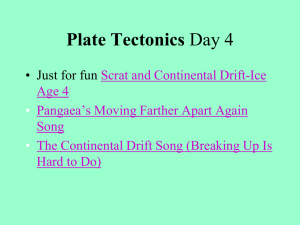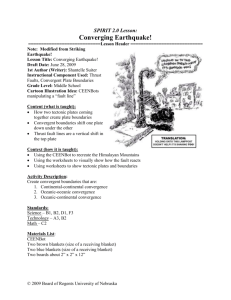Lesson 10 intro to earthquakes Q and A
advertisement
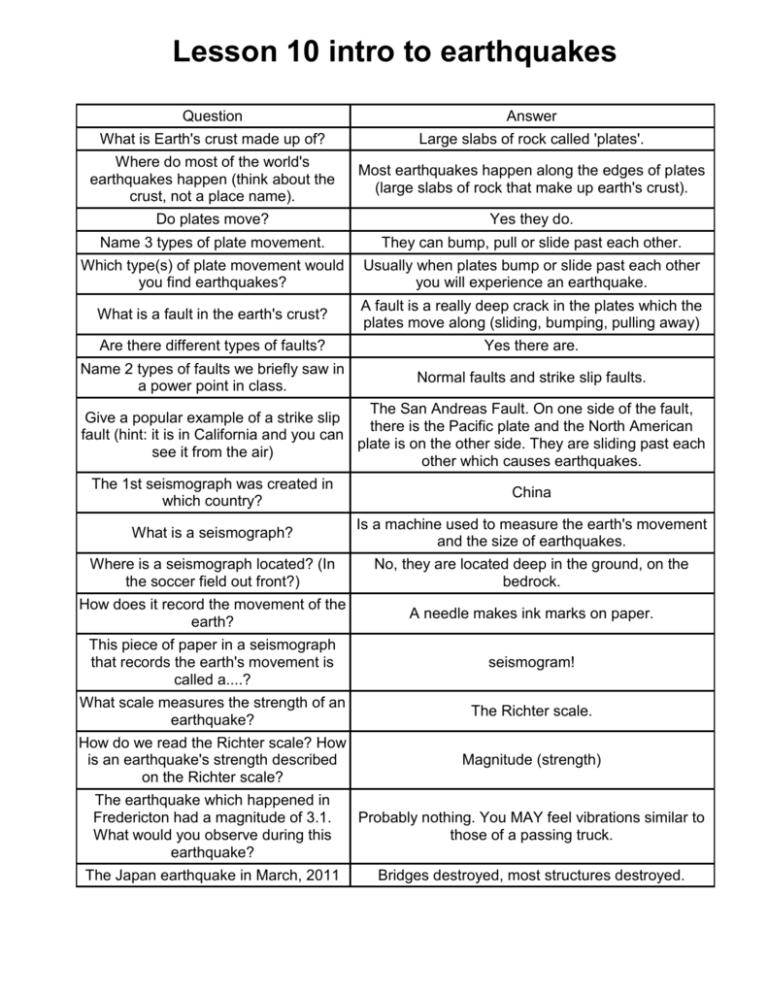
Lesson 10 intro to earthquakes Question Answer What is Earth's crust made up of? Large slabs of rock called 'plates'. Where do most of the world's earthquakes happen (think about the crust, not a place name). Most earthquakes happen along the edges of plates (large slabs of rock that make up earth's crust). Do plates move? Yes they do. Name 3 types of plate movement. They can bump, pull or slide past each other. Which type(s) of plate movement would you find earthquakes? Usually when plates bump or slide past each other you will experience an earthquake. What is a fault in the earth's crust? A fault is a really deep crack in the plates which the plates move along (sliding, bumping, pulling away) Are there different types of faults? Yes there are. Name 2 types of faults we briefly saw in a power point in class. Normal faults and strike slip faults. The San Andreas Fault. On one side of the fault, Give a popular example of a strike slip there is the Pacific plate and the North American fault (hint: it is in California and you can plate is on the other side. They are sliding past each see it from the air) other which causes earthquakes. The 1st seismograph was created in which country? China What is a seismograph? Is a machine used to measure the earth's movement and the size of earthquakes. Where is a seismograph located? (In the soccer field out front?) No, they are located deep in the ground, on the bedrock. How does it record the movement of the earth? A needle makes ink marks on paper. This piece of paper in a seismograph that records the earth's movement is called a....? seismogram! What scale measures the strength of an earthquake? The Richter scale. How do we read the Richter scale? How is an earthquake's strength described on the Richter scale? Magnitude (strength) The earthquake which happened in Fredericton had a magnitude of 3.1. What would you observe during this earthquake? Probably nothing. You MAY feel vibrations similar to those of a passing truck. The Japan earthquake in March, 2011 Bridges destroyed, most structures destroyed. registered 8.9 on the Richter scale. What would you observe during this earthquake? Which continental plate do we live on? North American plate. Japan is on which plate? Japan has a fault running through it so it is located on 2 plates - the Eurasian plate and the North American plate. The Ring of Fire is on the edge of this main plate. Pacific plate What is a seismologist? A scientist who studies earthquakes! What is the Ring of Fire? An area of frequent earthquakes and volcanic eruptions (mostly undersea) on the edge of the Pacific Ocean. It is home to 75% of the world's volcanoes. Can we predict earthquakes? No we can't.




